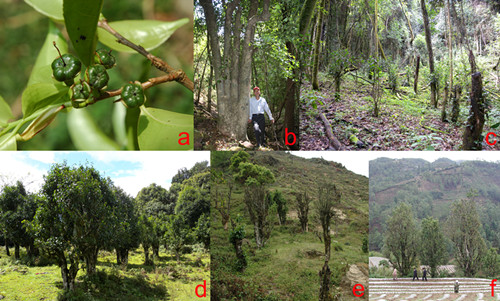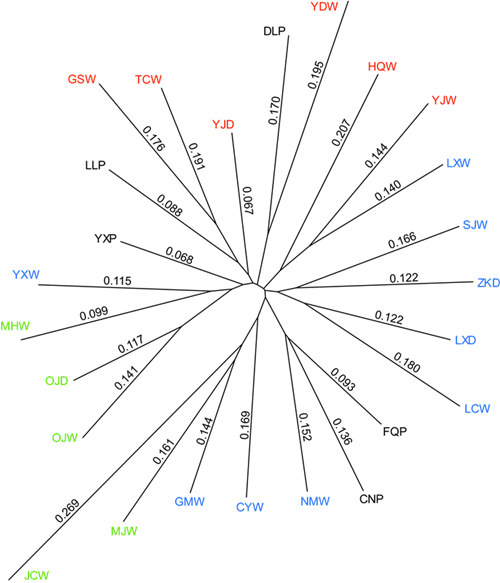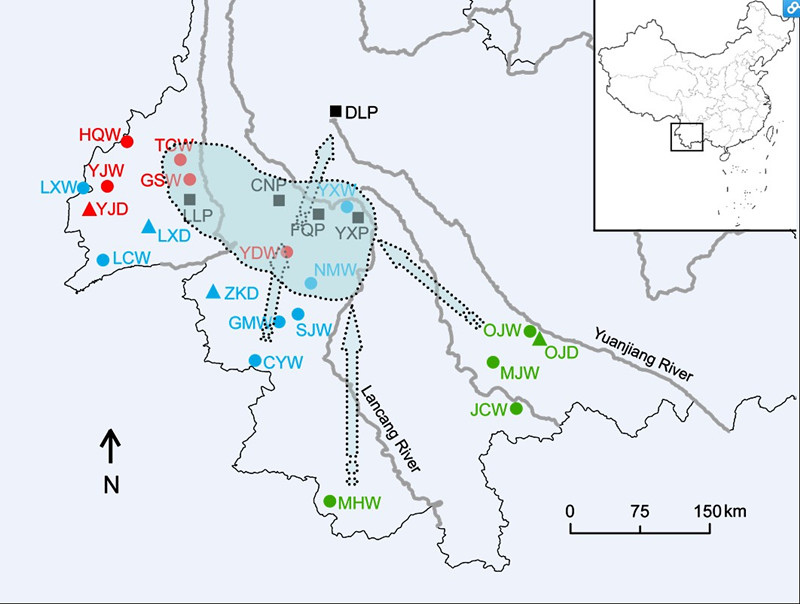Camellia taliensis (Theaceae) is endemic from western Yunnan province of China to northern Myanmar. Its leaf has been collected to produce beverage that is alike the tea from C. sinensis var. assamica but has its specific characteristic constituents. The tea probably made from C. taliensis was recorded 1300 years ago, and this species has been cultivated throughout western Yunnan at least for hundreds years.
Recently, ZHAO Dongwei, YANG Junbo and YANG Shixiong of Kunming Institute of Botany, investigated the genetic diversity and domestication origin of C. taliensis, which cooperated with investigators of Okayama University and Hefei University of Technology. Using 14 nuclear microsatellite loci, the study suggested that C. taliensis had a moderate high level of overall genetic diversity. The greater reduction of genetic diversity and stronger genetic drift were detected in the wild group than in the recently domesticated group, indicating the loss of genetic diversity of wild populations due to overexploitation and habitat fragmentation. Instead of the endangered wild trees, recently domesticated individuals were used to compare with the planted trees for detecting the genetic consequence of domestication. A little and non-significant reduction in genetic diversity was found during domestication. The long life cycle, selection for leaf traits and gene flow between populations will delay the emergence of bottleneck in planted trees. Both phylogenetic and assignment analyses suggested that planted trees may have been domesticated from the adjacent central forest of western Yunnan and dispersed artificially to distant places. As an endemic tea source plant, wild, planted and recently domesticated C. taliensis trees should all be protected for their unique genetic characteristics, which are valuable for tea breeding.
This manuscript entitled ‘Genetic diversity and domestication origin of tea plant Camellia taliensis (Theaceae) as revealed by microsatellite markers’ was published on BMC Plant Biology on January 9, 2014 (http://www.biomedcentral.com/1471-2229/14/14). This work was supported by the National Natural Science Foundation of China (31270246, 30870169) and grants from the Chinese Academy of Sciences through a Large-Scale Scientific Facilities’ Research Project (2009-LSF-GBOWS-01), and partly funded by the Japan Society for the Promotion of Science (JSPS) Asian CORE Program entitled ‘Cooperative Research and Educational Center for Important Plant Genetic Resources in East Asia’.

Figure 1. Camellia taliensis. (a) A branch with young fruit showing the five-loculed ovary, (b) wild tree, (c) wild trees after felling, (d) in situ recently domesticated trees, (e) ex situ recently domesticated trees, (f) planted trees.

Figure 2. Ancestry analysis of planted C. taliensis.

Figure 3. Neighbor-joining phylogenetic relationships of 25 populations of C. taliensis, mean drift values for each population appear along lines.

Figure 4. Estimated geographic origin (the shadow) and potential routes of artificial dispersal (arrows) of planted C. taliensis.




